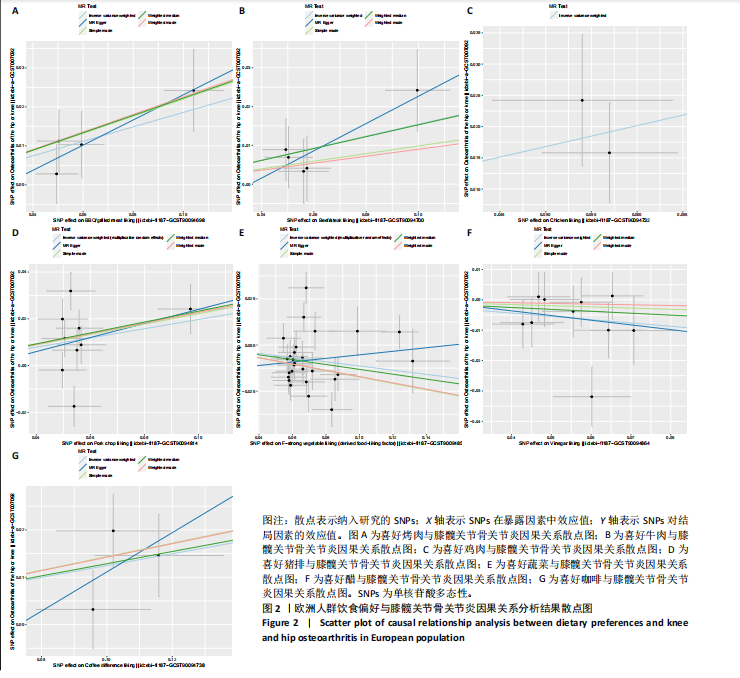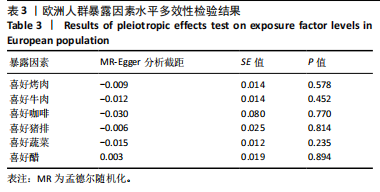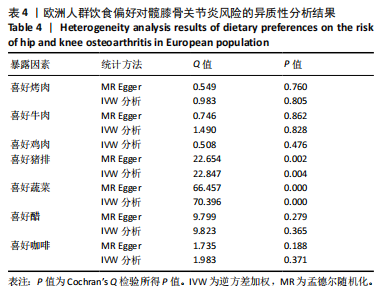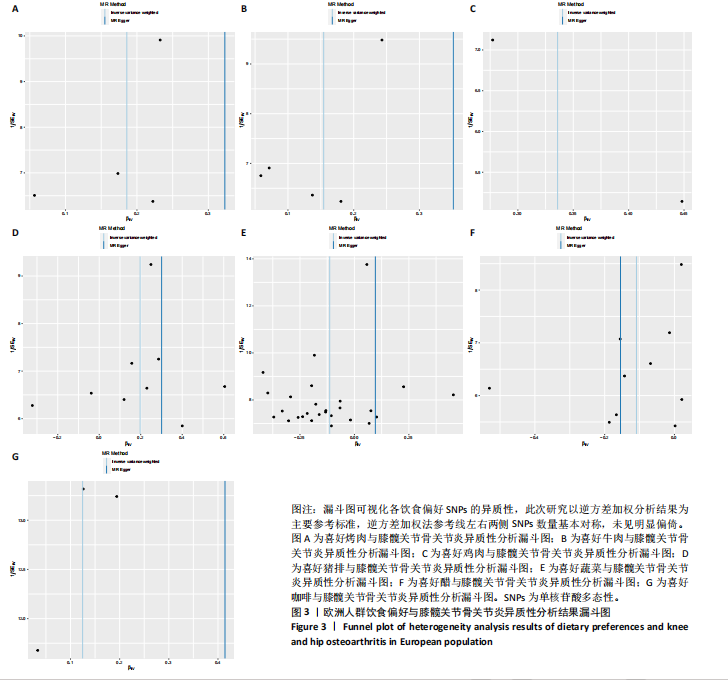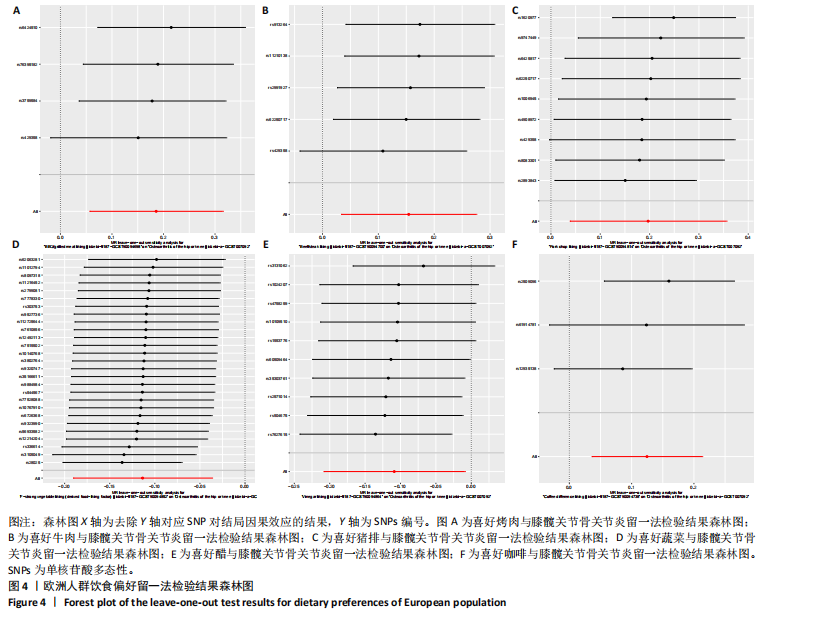[1] ZHONG G, MADRY H, CUCCHIARINI M. Mitochondrial Genome Editing to Treat Human Osteoarthritis-A Narrative Review. Int J Mol Sci. 2022; 23(3):1467.
[2] WOOD MJ, MILLER RE, MALFAIT AM. The Genesis of Pain in Osteoarthritis: Inflammation as a Mediator of Osteoarthritis Pain. Clin Geriatr Med. 2022;38(2):221-238.
[3] HUNTER DJ, MARCH L, CHEW M. Osteoarthritis in 2020 and beyond: a Lancet Commission. Lancet. 2020;396(10264):1711-1712.
[4] RATHBUN AM, STUART EA, SHARDELL M, et al. Dynamic Effects of Depressive Symptoms on Osteoarthritis Knee Pain. Arthritis Care Res (Hoboken). 2018;70(1):80-88.
[5] HUNTER DJ. Osteoarthritis Management: Time to Change the Deck. J Orthop Sports Phys Ther. 2017;47(6):370-372.
[6] WANG H, LIAO R, TANG W, et al. Dietary inflammation index and osteoarthritis in the elderly: is there a mediating role of physical activity? Br J Nutr. 2022;128(11):2258-2266.
[7] WEI Y, ZHANG T, LIU Y, et al. Ultra-processed food consumption, genetic susceptibility, and the risk of hip/knee osteoarthritis. Clin Nutr. 2024; 43(6):1363-1371.
[8] LIU T, XU C, DRIBAN JB, et al. Whole grain consumption and risk of radiographic knee osteoarthritis: a prospective study from the Osteoarthritis Initiative. Rheumatology (Oxford). 2023;62(5):1834-1840.
[9] ZENG J, FRANKLIN DK, DAS A, et al. The effects of dietary patterns and food groups on symptomatic osteoarthritis: A systematic review. Nutr Diet. 2023;80(1):21-43.
[10] SEKULA P, DEL GRECO MF, PATTARO C, et al. Mendelian Randomization as an Approach to Assess Causality Using Observational Data. J Am Soc Nephrol. 2016;27(11):3253-3265.
[11] MAY-WILSON S, MATOBA N, WADE KH, et al. Large-scale GWAS of food liking reveals genetic determinants and genetic correlations with distinct neurophysiological traits. Nat Commun. 2022;13(1):2743.
[12] MOUNIER N, KUTALIK Z. Bias correction for inverse variance weighting Mendelian randomization. Genet Epidemiol. 2023;47(4):314-331.
[13] KANTERS S. Fixed- and Random-Effects Models. Methods Mol Biol. 2022;2345:41-65.
[14] WANG Y, SIMPSON JA, WLUKA AE, et al. Meat consumption and risk of primary hip and knee joint replacement due to osteoarthritis: a prospective cohort study. BMC Musculoskelet Disord. 2011;12:17.
[15] ZHU D, WANG X, XI Z, et al. Diet influences knee osteoarthritis osteophyte formation via gut microbiota and serum metabolites. iScience. 2024;27(6):110111.
[16] ÇOLAK B, KÜRKLÜ NS, ADIGÜZEL KT, et al. Dietary and serum antioxidant capacity is inversely associated with patients in osteoarthritis: a case-control study. J Health Popul Nutr. 2024;43(1):101.
[17] XU C, LIU T, DRIBAN JB, et al. Dietary patterns and risk of developing knee osteoarthritis: data from the osteoarthritis initiative. Osteoarthritis Cartilage. 2021;29(6):834-840.
[18] GRIFFIN TM, FERMOR B, HUEBNER JL, et al. Diet-induced obesity differentially regulates behavioral, biomechanical, and molecular risk factors for osteoarthritis in mice. Arthritis Res Ther. 2010;12(4):R130.
[19] WAUQUIER F, LEOTOING L, COXAM V, et al. Oxidative stress in bone remodelling and disease. Trends Mol Med. 2009;15(10):468-477.
[20] SAMRAJ AN, PEARCE OM, LÄUBLI H, et al. A red meat-derived glycan promotes inflammation and cancer progression. Proc Natl Acad Sci U S A. 2015;112(2):542-547.
[21] SHI W, HUANG X, SCHOOLING CM, et al. Red meat consumption, cardiovascular diseases, and diabetes: a systematic review and meta-analysis. Eur Heart J. 2023;44(28):2626-2635.
[22] JOHNSON CSC, SHIVELY CA, MICHALSON KT, et al. Contrasting effects of Western vs Mediterranean diets on monocyte inflammatory gene expression and social behavior in a primate model. Elife. 2021; 10:e68293.
[23] ZHANG Y, JI Q. Macrophage polarization in osteoarthritis progression: a promising therapeutic target. Front Cell Dev Biol. 2023;11:1269724.
[24] ZHANG H, LIN C, ZENG C, et al. Synovial macrophage M1 polarisation exacerbates experimental osteoarthritis partially through R-spondin-2. Ann Rheum Dis. 2018;77(10):1524-1534.
[25] LIU B, ZHANG M, ZHAO J, et al. Imbalance of M1/M2 macrophages is linked to severity level of knee osteoarthritis. Exp Ther Med. 2018; 16(6):5009-5014.
[26] ZHANG H, CAI D, BAI X. Macrophages regulate the progression of osteoarthritis. Osteoarthritis Cartilage. 2020;28(5):555-561.
[27] BANG CH, KIM C, KIM JH, et al. Is knee osteoarthritis related to coffee drinking? A nationwide cross-sectional observational study. Clin Rheumatol. 2019;38(3):817-825.
[28] CHOI H, CHOI Y, KIM J, et al. Longitudinal bone growth is impaired by direct involvement of caffeine with chondrocyte differentiation in the growth plate. J Anat. 2017;230(1):117-127.
[29] DRANOFF JA. Coffee, adenosine, and the liver. Purinergic Signal. 2024; 20(1):21-28.
[30] CORCIULO C, LENDHEY M, WILDER T, et al. Endogenous adenosine maintains cartilage homeostasis and exogenous adenosine inhibits osteoarthritis progression. Nat Commun. 2017;8:15019.
[31] CORCIULO C, CASTRO CM, COUGHLIN T, et al. Intraarticular injection of liposomal adenosine reduces cartilage damage in established murine and rat models of osteoarthritis. Sci Rep. 2020;10(1):13477.
[32] ANSARI MY, AHMAD N, HAQQI TM. Oxidative stress and inflammation in osteoarthritis pathogenesis: Role of polyphenols. Biomed Pharmacother. 2020;129:110452.
[33] LEE SA, MOON SM, HAN SH, et al. Chondroprotective effects of aqueous extract of Anthriscus sylvestris leaves on osteoarthritis in vitro and in vivo through MAPKs and NF-κB signaling inhibition. Biomed Pharmacother. 2018;103:1202-1211.
[34] AHMAD N, ANSARI MY, BANO S, et al. Imperatorin suppresses IL-1β-induced iNOS expression via inhibiting ERK-MAPK/AP1 signaling in primary human OA chondrocytes. Int Immunopharmacol. 2020;85: 106612.
[35] MARTINS BC, SOARES AC, MARTINS FF, et al. Coffee consumption prevents obesity-related comorbidities and attenuates brown adipose tissue whitening in high-fat diet-fed mice. J Nutr Biochem. 2023;117: 109336.
[36] ZHANG X, XU J. The effect of coffee consumption on three main bone disorders: a Mendelian randomization trial. J Bone Miner Metab. 2024;42(6):633-646.
[37] LEE YH. Investigating the possible causal association of coffee consumption with osteoarthritis risk using a Mendelian randomization analysis. Clin Rheumatol. 2018;37(11):3133-3139.
[38] ZHENG S, WU F, WINZENBERG T, et al. The cross-sectional and longitudinal associations of dietary patterns with knee symptoms and MRI detected structure in patients with knee osteoarthritis. Osteoarthritis Cartilage. 2021;29(4):527-535.
[39] RUAN G, YANG C, MENG T, et al. Associations between diet quality and knee joint structures, symptoms and systemic abnormalities in people with symptomatic knee osteoarthritis. Clin Nutr, 2021;40(5):2483-2490.
[40] CHEN M, HUANG L, LV Y, et al. Sulforaphane protects against oxidative stress‑induced apoptosis via activating SIRT1 in mouse osteoarthritis. Mol Med Rep. 2021;24(2):612.
[41] RUAN H, ZHU T, WANG T, et al. Quercetin Modulates Ferroptosis via the SIRT1/Nrf-2/HO-1 Pathway and Attenuates Cartilage Destruction in an Osteoarthritis Rat Model. Int J Mol Sci. 2024;25(13):7461.
[42] SINGH K, GUPTA JK, KUMAR S. The Pharmacological Potential of Resveratrol in Reducing Soft Tissue Damage in Osteoarthritis Patients. Curr Rheumatol Rev. 2024;20(1):27-38.
[43] BUDAK NH, AYKIN E, SEYDIM AC, et al. Functional properties of vinegar. J Food Sci. 2014;79(5):R757-R764.
[44] LI Y, JIA X, TANG N, et al. Melanoidins, extracted from Chinese traditional vinegar powder, inhibit alcohol-induced inflammation and oxidative stress in macrophages via activation of SIRT1 and SIRT3. Food Funct. 2021;12(17):8120-8129.
[45] XIA T, DUAN W, ZHANG Z, et al. Polyphenol-rich vinegar extract regulates intestinal microbiota and immunity and prevents alcohol-induced inflammation in mice. Food Res Int. 2021;140:110064.
[46] XIE Z, QIN Y. Is diet related to osteoarthritis? A univariable and multivariable Mendelian randomization study that investigates 45 dietary habits and osteoarthritis. Front Nutr. 2023;10:1278079.
[47] LIANG R, ZHONG W, ZE S, et al. Causal association between dried fruit intake and risk of osteoarthritis: A Mendelian randomization study. Medicine (Baltimore). 2024;103(14):e37710. |
